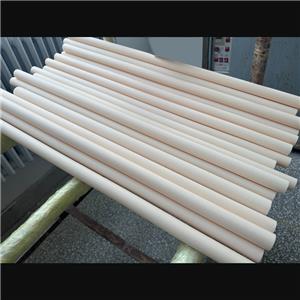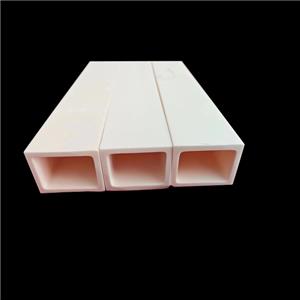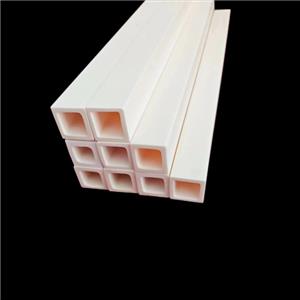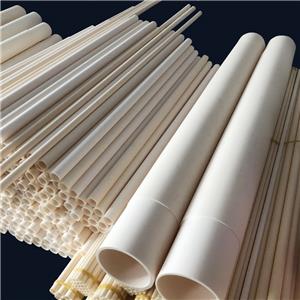Introduction of 10 Sintering Processes for Alumina Ceramics(5-10)
Introduction of 10 Sintering Processes for Alumina Ceramics(5-10)
5. Microwave heating method sintering
Microwave heating sintering uses the interaction between microwaves and ceramics because the dielectric effect sinters both the ceramic interior and the ceramic exterior. The microwave sintering method is different from other sintering methods. Its hot air flow is from the inside to the outside, which helps the gas in the ceramic body to diffuse to the outside. At the same time, microwaves make the crystal particles more active and easier to migrate to promote densification.
Compared with other sintering methods, microwave sintering can heat up and sinter quickly, with a uniform temperature environment, low thermal stress, and no pollution. The sintering temperature of microwave sintering is reduced by 100 ° C to 150 ° C compared to the sintering temperature of conventional sintering, and the sintering time is nearly an order of magnitude shorter than that of conventional sintering. Under the same conditions, the density of microwave sintering is obviously higher than that of conventional sintering. Microwave sintering can sinter products with complex shapes, and the sintered ceramics have small crystal particles, good uniformity and good fracture toughness.
6. Microwave plasma sintering
Compared with conventional sintering, microwave plasma sintering can reduce the sintering temperature by 200 ° C under the same conditions, and has a fast sintering speed, small grain size, and high mechanical strength. One reason microwave plasma sintering promotes densification is the rapid temperature rise, which can reduce the growth of crystal particles due to surface diffusion. It provides a strong driving force and a short distance for volume diffusion and grain boundary diffusion. Thereby, the sintering temperature of the alumina ceramic is reduced, and the crystal grains are refined.
7. Discharge plasma sintering
Discharge plasma sintering is a newer sintering method developed in recent years. It uses pulse energy and the instantaneous high temperature field generated by pulse pressure to achieve the spontaneous heating of the crystal grains in the ceramic and activate the grains. The method has the advantages of rapid temperature increase, rapid temperature decrease, and short heat preservation time, which suppresses the growth of crystal grains, shortens the preparation period of ceramics, and saves energy. Discharge plasma sintering is actually a new hot-pressing sintering method. The obtained ceramic samples have uniform grains, high densities, and good mechanical properties. ,It is a valuable and promising sintering method.
In the process of preparing high-purity alumina ceramics by discharge plasma sintering, the heating rate has a great influence on the sintering densification of samples at different stages.In the initial stage of sintering, the faster heating rate can increase the density of the sintered body, while in the later stage of sintering, the faster heating rate will lead to the decreased density of the sintered body.
8. Two-step sintering method
The two-step sintering method is to heat the sample to a specific temperature (T1) to eliminate the subcritical pores of the ceramic semi-finished product, then it is reduced to a lower temperature (T2) to achieve densification. In the low-temperature sintering stage of the two-step sintering method, since the activation energy of grain boundary migration is higher than the activation energy of grain boundary diffusion, this stage is mainly dominated by grain boundary diffusion. Therefore, in the second stage of the two-step sintering process, the ceramic semi-finished product is continuously dense, but the grains do not grow too quickly. In the low-temperature sintering stage of the two-step sintering method, the premise of complete compacting of the ceramic semi-finished product is that during the shrinkage of the ceramic semi-finished product, The pores in ceramic semi-finished products gradually become closed pores.
9. Microwave two-step sintering method
The two-step sintering can be performed in a traditional sintering furnace, the equipment cost is low, and it has strong application value. However, two-step sintering is a relatively slow sintering process because it needs to be kept warm at the second temperature point for a long time. Microwave heating usually has the advantages of overall heating and rapid heating. Few studies have combined microwave heating with two-step heating. However, microwave heating can reduce the sintering temperature and shorten the sintering time, which will help further refine the grains and effectively shorten the production cycle of the two-step method.
10. High vacuum sintering
High vacuum sintering is a sintering technique for sintering ceramic semi-finished products under high vacuum conditions. Vacuum sintering has attracted the attention of many scholars in the preparation of ceramics with low porosity and small size due to its advantages such as lowering the heating rate, suppressing abnormal grain growth, and reducing irregular porosity.
High Vacuum sintering can not only strengthen some properties of high-purity alumina ceramics, but also reduce impurities at the grain boundaries and pores in the sintered body. During the process of preparing high-purity alumina ceramics by vacuum sintering, the oxygen ions in the alumina crystal lattice are easily lost, and a large number of oxygen ion vacancies are formed. The aluminum ion concentration is relatively increased, which leads to the acceleration of the aluminum ion diffusion process and facilitates the sintering.




